Ruth Bader Ginsburg, powerhouse Supreme Court Justice, dies at 87
She was appointed to the Supreme Court by Bill Clinton in 1993.
Ruth Bader Ginsburg, the powerhouse Supreme Court justice and champion for women's rights, has died at the age of 87.
"Associate Justice Ruth Bader Ginsburg died this evening surrounded by her family at her home in Washington, D.C., due to complications of metastatic pancreas cancer," Supreme Court spokeswoman Kathy Arberg said.
Her death while still serving on the Court, a scenario long-dreaded by liberals, creates a rare election-year opportunity for President Donald Trump to nominate a conservative replacement, triggering a pitched political battle.
"Our Nation has lost a jurist of historic stature. We at the Supreme Court have lost a cherished colleague," Chief Justice John Roberts said in a statement. "Today we mourn, but with confidence that future generations will remember Ruth Bader Ginsburg as we knew her -- a tireless and resolute champion of justice."
Ginsburg had become the standard bearer for the court's liberal wing, writing landmark opinions that advanced gender equality and rights for disabled Americans and immigrants in her more than quarter century on the bench.
She was equally known for impassioned dissents on major social issues -- from affirmative action to equal pay -- which earned her a sort of rock-star status among progressives and inspired lawmakers on how to legislate social change.
"In the last 26 years, she has far exceeded even my expectations," former President Bill Clinton, who appointed Ginsburg to the court, at a 2019 event honoring the justice at his presidential library. "We like her because she seems so totally on the level in a world hungry for people who are not trying to con you, who are on the level."
Ginsburg was the second woman to sit on the high court, joining Sandra Day O'Connor in 1993, and went on to become its longest-serving woman in history. She was the first female Jewish justice.
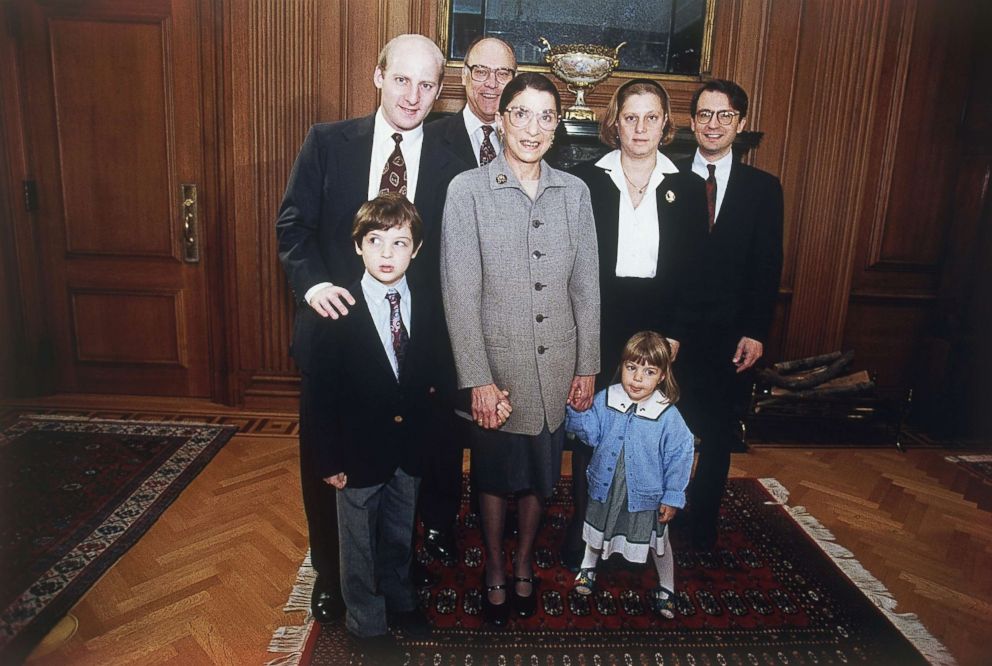
"Ruth Ginsburg is an inspiration," said Justice Brett Kavanaugh, the court's newest member, in his first public speech as a justice in 2019. He called her a "dedicated, hardworking and generous soul."
Chief Justice John Roberts has called Ginsburg a "rock star."
Justice Sonia Sotomayor, the third woman and first Latina appointed to the Supreme Court, has likened her colleague to a "steel magnolia." "She's delicate on the outside," Sotomayor said of Ginsburg in 2018, "but she has an iron rod behind it."
Throughout her career, Ginsburg defied gender norms and skeptics of her mettle.
She was one of just nine women in a class of 500 students at Harvard Law School in 1956 and became the first female member of the prestigious Harvard Law Review. She later transferred to Columbia University Law School, following her beloved husband Marty who landed a job in Manhattan.
When she graduated top of her class in 1959 without a single job offer from a New York law firm, she accepted a clerkship with a federal judge in Manhattan.
Undeterred, Ginsburg pursued the law through academia, first as a researcher at Columbia and later joining the faculty of Rutgers University in New Jersey, where she became one of the first women to teach at any American law school.
In the 1970s, Ginsburg began taking up sex discrimination cases with the ACLU and co-founded the organization's Women's Rights Project. She argued six cases before the Supreme Court and won five of them.
She argued on behalf of men as well as women, part of a strategy to fight gender inequality in a way that appealed to a predominantly male judiciary. In the 1975 case Weinberger v. Wiesenfeld, Ginsburg represented a widower seeking to recover his wife's Social Security survivor benefits, which at the time were only granted to widows. She won.
"I was doing what my mother taught me to do – be a good teacher," Ginsburg told a crowd at Meredith College in North Carolina last year. "It was getting the court to understand that these were no favors to women and opening their eyes to that reality was the challenge."
President Jimmy Carter appointed Ginsburg to the U.S. Court of Appeals in 1980 where she spent 13 years and wrote hundreds of opinions. "What Jimmy Carter began was to change the complexion of the judiciary," she said of her nomination and that of 40 other women, a record.
In 1993, Justice Byron White announced his retirement from the Supreme Court, giving a young President Bill Clinton his first chance to make an appointment, just seven months after taking office. Clinton considered several candidates before settling on Ginsburg after a face-to-face Oval Office meeting.
"She was brilliant and had a good head on her shoulders. She was rigorous but warm hearted. She had a good sense of humor and sensible, attainable judicial philosophy," Clinton said recently, reflecting on his pick.
"I thought she had the ability to find common ground in a country increasingly polarized," he said. "She had already proved herself to be a healer. In short, I liked her and I believed in her."
The U.S. Senate confirmed Ginsburg on Aug. 3, 1993, by a vote of 96-3.
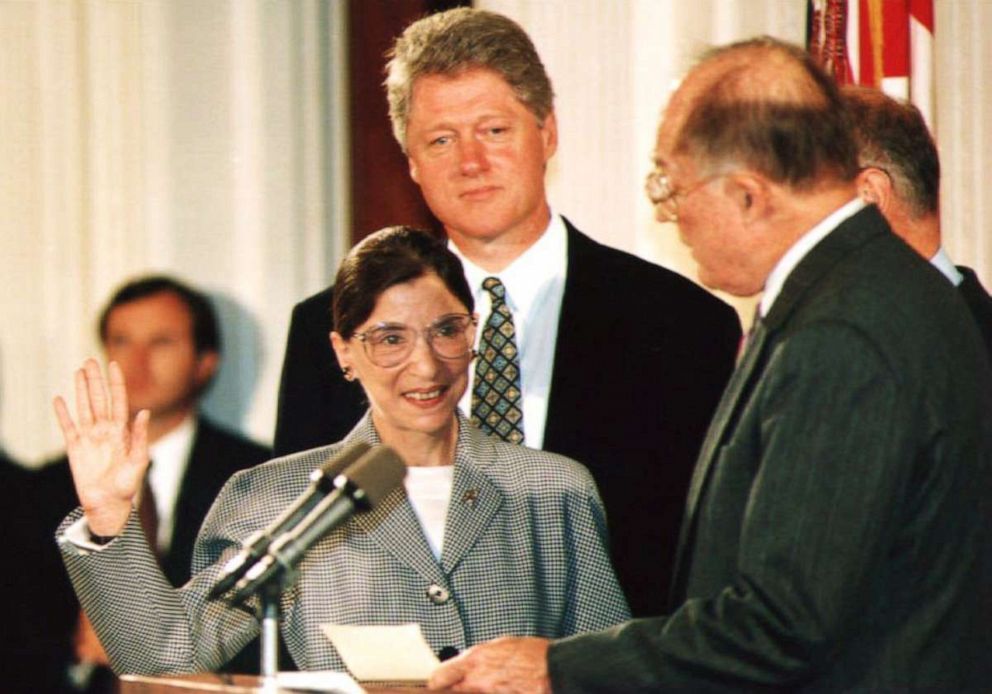
Judicial legacy
Her judicial philosophy advocated narrowly tailored, thoughtful decisions that did not get out too far ahead of public opinion or the responsibility of legislators to make policy.
Ginsburg famously lamented the Supreme Court's reasoning in its 1973 Roe v. Wade opinion, which grounded abortion rights in a constitutional right to privacy rather the principle of equal protection.
While she staunchly defended reproductive rights, Ginsburg believed the Court had gone too far, too fast, putting forward a "grand philosophy" at a time when many states were taking steps to "liberalize" abortion laws on their own.
"No measured motion, the Roe decision left virtually no state with laws fully conforming to the Court's delineation of abortion regulation still permissible," Ginsburg wrote in a 1993 Washington Post op-ed. "Around that extraordinary decision, a well-organized and vocal right-to-life movement rallied and succeeded, for a considerable time, in turning the legislative tide in the opposite direction."
She authored dozens of majority opinions in her career, earning a reputation among her colleagues for speed and accuracy.
"As a litigator and then as a judge, she changed the face of American anti-discrimination law," Justice Elena Kagan said of her colleague in 2014.
Ginsburg considered one of her most important opinions the 1996 case United States v. Virginia that found the Virginia Military Institute's male-only admission policy violated the 14th Amendment's Equal Protection clause.
"Neither the goal of producing citizen soldiers nor VMI's implementing methodology is inherently unsuitable to women," she wrote in an opinion joined by five of her colleagues. "And the school's impressive record in producing leaders has made admission desirable to some women."
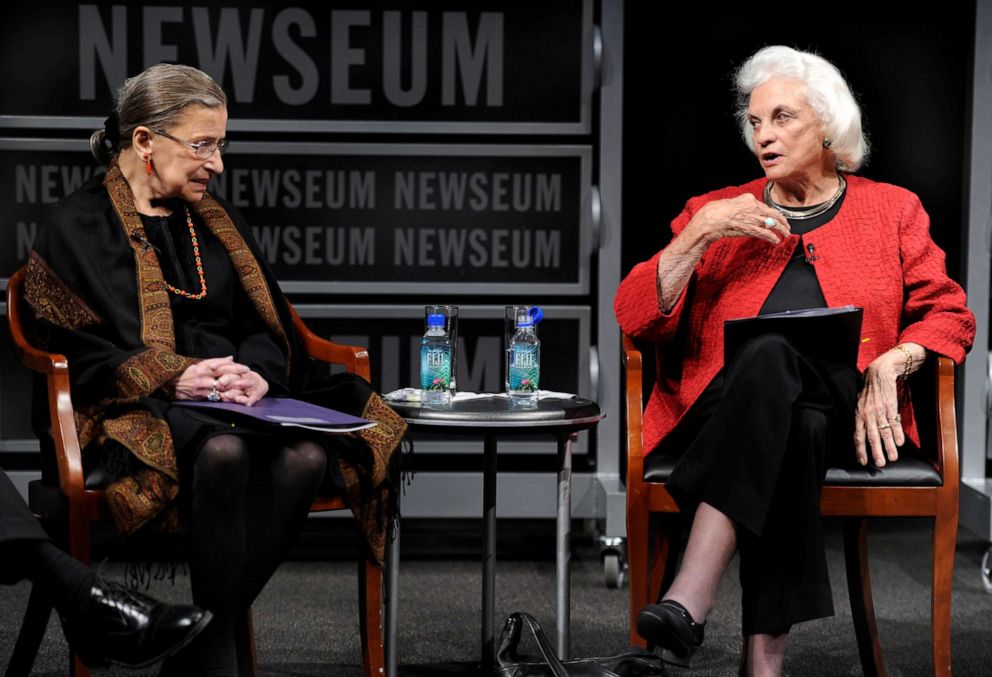
In her memoir, My Own Words, Ginsburg writes that she regards the case as "the culmination of the 1970s endeavor to open doors so that women could aspire and achieve without artificial constraints."
In 1999, Ginsburg delivered the majority opinion in Olmstead v. L.C. which affirmed the right of Americans with disabilities to receive state-funded support and services in their communities, instead of only designated institutions.
"We confront the question whether the proscription of discrimination may require placement of persons with mental disabilities in community settings rather than in institutions," she wrote. "The answer, we hold, is a qualified yes."
As the court moved to the right, Ginsburg often challenged her colleagues with polite but impassioned dissents.
One of her most famous dissents came in Bush v. Gore, which brought an end to the contested 2000 election and cleared the way for George W. Bush to claim the presidency. "I dissent," Ginsburg wrote sharply, breaking with the customary "I respectfully dissent" in a subtle protest.
"There's never been a case like Bush v. Gore before or since. From the day of that decision, continuing to this day, the Court has never cited it as precedent in any other case, and I think it will remain that way," she said in a lecture in 2014.
Defending abortion rights was a hallmark of her tenure. In 2007, Ginsburg blasted a narrow 5-4 decision in Gonzales v. Carhart upholding a ban on intact dilation and extraction abortions as "quite simply irrational."
"The notion that the Partial-Birth Abortion Ban Act furthers any legitimate governmental interest is, quite simply, irrational," she wrote in her dissent. "The Court's defense of it cannot be understood as anything other than an effort to chip away at a right declared again and again by this Court -- and with increasing comprehension of its centrality to women's lives."
Occasionally lawmakers used Ginsburg's dissents as inspiration for new legislation.
When the Court in 2007 upheld a statute of limitations for pay discrimination claims against Goodyear Tire, Ginsburg read her dissent from the bench and proposed a legislative fix.
"In our view, the court does not comprehend, or is indifferent to, the insidious way in which women can be victims of pay discrimination," she said.
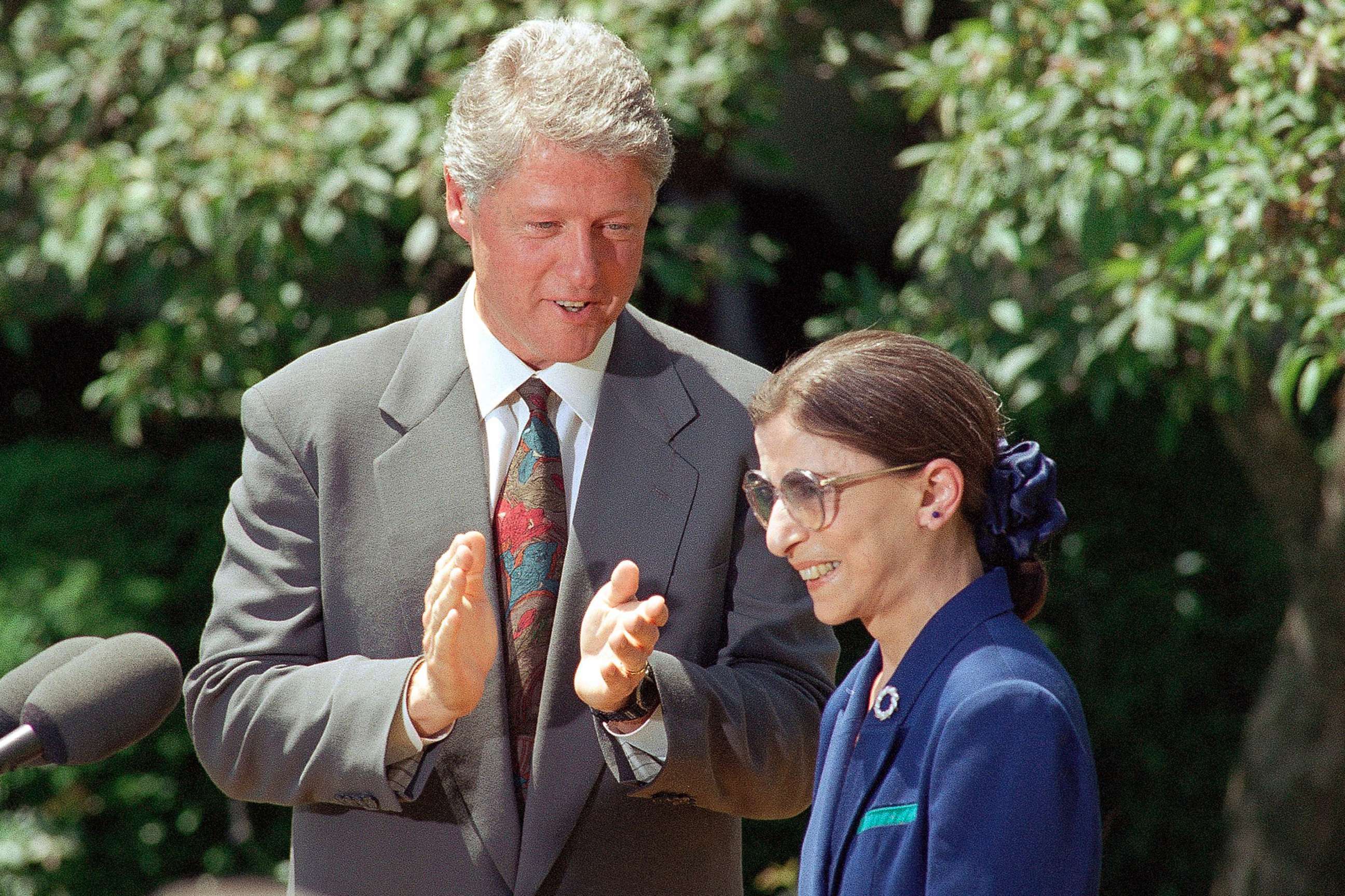
Two years later, after action by Congress, President Barack Obama signed the Lily Ledbetter Fair Pay Act, named after the woman who had sued Goodyear and lost at the Supreme Court, extending the statute of limitations for future unequal pay claims. A framed copy of the law hung in Ginsburg's chambers.
"The idea that the dissent put forward was the soul of simplicity," Ginsburg later said. "It said, 'Every paycheck that this woman receives is renewing the discrimination, so she can sue within 180 days of her latest paycheck, and she will be on time.' That's what Congress said: 'Yes, that's what we meant.'"
"If there was one decision I would overrule, it would be Citizens United," she told law professor Jeffrey Rosen of the landmark 2010 decision lifting corporate spending limits in campaigns. "I think the notion that we have all the democracy that money can buy strays so far from what our democracy is supposed to be. So that's No. 1 on my list."
In 2013, Ginsburg strongly opposed the Court's controversial Shelby County v. Holder decision that struck down a key portion of the 1965 Voting Rights Act requiring state and local governments with a history of discrimination to get preclearance from the Justice Department before changing voting laws.
"Throwing out preclearance when it has worked and is continuing to work to stop discriminatory changes is like throwing away your umbrella in a rainstorm because you are not getting wet," Ginsburg wrote in her dissent.
The opinion gave rise to a new nickname for Ginsburg -- "Notorious R.B.G." -- coined by an NYU law school student as a play on the late rapper Notorious B.I.G.
"She was angry, and then it came to her that anger is a useless emotion," Ginsburg said of the student. "And the positive thing she did was to put on her blog my dissenting opinion in the case and then it took off from there."
In 2012, Ginsburg wrote what longtime court reporter Jeffrey Toobin called "probably the most powerful opinion of her career" endorsing the constitutionality of the Affordable Care Act.
"Unlike the market for almost any other product or service, the market for medical care is one in which all individuals inevitably participate," she wrote, defending Congress' sweeping power under the Constitution's commerce clause. "Virtually every person residing in the U.S., sooner or later, will visit a doctor or other health care professional."
"Dissents speak to a future age," Ginsburg told NPR's Nina Totenberg in 2002. "The greatest dissents do become court opinions and gradually over time their views become a dominant view. So that's the dissenter's hope: that they are writing not for today but for tomorrow."
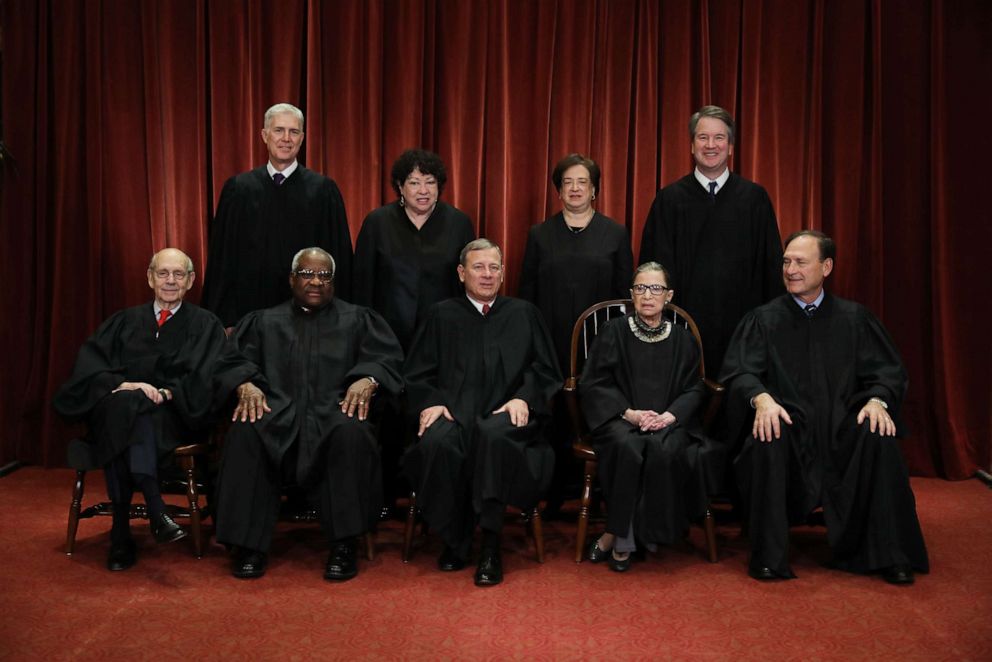
While she would clash with her colleagues ideologically, Ginsburg extended a hand of friendship to even her most conservative peers, including, famously, the late Justice Antonin Scalia.
"When he was nominated, although his views were very well known, he was confirmed unanimously. And I came pretty close to that -- the vote on me was 96 to 3," Ginsburg said of her friend in a recent conversation with the law professor Rosen. "It would not be that way today, but don't you think that's the direction in which we should seek to return?"
Ginsburg and Scalia shared a love of opera, occasionally attending performances together at the Kennedy Center. The duo was also the subject of an opera -- "Scalia/Ginsburg" -- written by a University of Maryland law school student. Ginsburg's favorite duet in the work is titled "We Are Different, We Are One."
"The idea is that there are two people who interpret the Constitution differently yet retain their fondness for each other and, much more than that," she said, "their reverence for the institution that employs them."
Brooklyn-born and activist roots
Born Joan Ruth Bader in Brooklyn, New York, in 1933, she was the second daughter of Jewish immigrants.
"I am … a first generation American on my father's side, barely second generation on my mother's," Ginsburg told the Senate Judiciary Committee in her confirmation hearing. "Neither of my parents had the means to attend college, but both taught me to love learning, to care about people, and to work hard for whatever I wanted or believed in."
She credited her mother -- a garment factory worker -- as being one of the greatest influences on her life. "My mother told me two things constantly," Ginsburg said in a recent interview with the ACLU. "One was to be a lady, and the other was to be independent."
Ginsburg also deeply loved and valued her husband, Marty, whom she met as an Cornell University undergraduate and married in 1954. Together they were lawyers and co-partners both in advocacy for women and in parenthood.
"I have had more than a little bit of luck in life, but nothing equals in magnitude my marriage to Martin D. Ginsburg," she wrote in her memoir. "I do not have words adequate to describe my super smart, exuberant, ever-loving spouse."
The couple had two children together -- Jane and James -- forging a strong family bond for 56 years up to his death from cancer in 2010.
"I certainly wouldn't be here today were it not for Marty because he made me feel that I was better than I thought I was," she said at an event in January 2018. "He had a great sense of humor and another very important strength -- he was a wonderful cook."
Late-in-life pop culture icon
Ginsburg showed remarkable resilience late into life.
She survived four battles with cancer over her Supreme Court career, never having to recuse herself from casework because of illness. In December 2018, she was absent from oral arguments for the first time in 26 years after undergoing lung cancer surgery, but she participated in the cases remotely. During the coronavirus pandemic, she joined oral arguments by phone from a Maryland hospital where she was being treated for a gallbladder infection.
Even as the court's oldest member, she maintained one of the most aggressive public schedules of any of her peers, regularly traveling the country in her final years.
"I think my work is what saved me because instead of dwelling on my physical discomforts if I have an opinion to write or brief to read I know I've just got to get it done and have to get over it," she said last year.
Her workout regimen became the stuff of legends, performing push-ups, holding abdominal planks and pumping weights late into her 80s. When the Court employee gym shutdown during COVID-19, Ginsburg continued to do her workouts in a special isolated fitness space set up at her request. Her personal trainer, Bryant Johnson, memorialized her routine in the 2017 book, "The RBG Workout: How She Stays Strong… And You Can Too!"
Even after receiving radiation treatment for a pancreatic tumor in 2019, Ginsburg told a crowd at the University of California Berkley that she "never left" the gym.
"Even in my lowest periods I couldn't do very much, but I did what I can," she said.
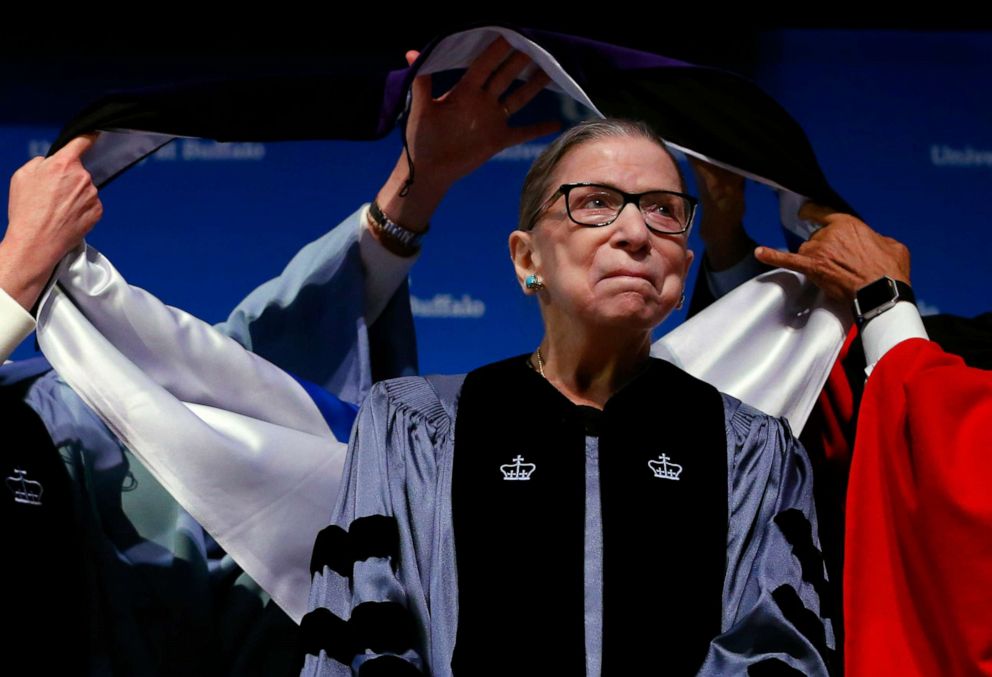
Her persistence electrified her fans and solidified her status as a pop culture icon.
"Regularly she's portrayed on [Saturday Night Live] delivering her 'Ginsburns,'" joked Bill Clinton before a packed Arkansas arena of thousands of RBG fans in 2019. "And now you can see her image on T-shirts, totes and coffee mugs the world over. You can become resentful of such a person, but you're not."
Her life was the subject of a 2018 Oscar-nominated documentary -- "RBG" -- and a Hollywood biopic -- "On the Basis of Sex" -- starring Felicity Jones and Armie Hammer.
Ginsburg was the recipient of numerous honorary degrees and awards, including the prestigious Berggruen Prize, a $1 million honorarium to recognize a figure whose ideas have "profoundly shaped human self-understanding and advancement in a rapidly changing world."
"You can earn a living but you can also do something outside yourself that will make things a little better for people less fortunate than you," Ginsburg told a group of Duke University law school students in 2019.
Her tenure was not entirely without controversy. In 2016, Ginsburg waded into the presidential campaign with public criticism for the presumptive presidential nominee, Donald J. Trump, whom she called a "faker."
"Justice Ginsburg of the U.S. Supreme Court has embarrassed all by making very dumb political statements about me. Her mind is shot -- resign!" then-candidate Trump tweeted at the time.
Ginsburg later apologized for the remarks, calling them "ill-advised" and promising to be "more circumspect" in the future. Earlier this year, Trump demanded that Ginsburg recuse from "all Trump, or Trump related, matters!" She declined.
Her death during the Trump presidency was something she had hoped to avoid.
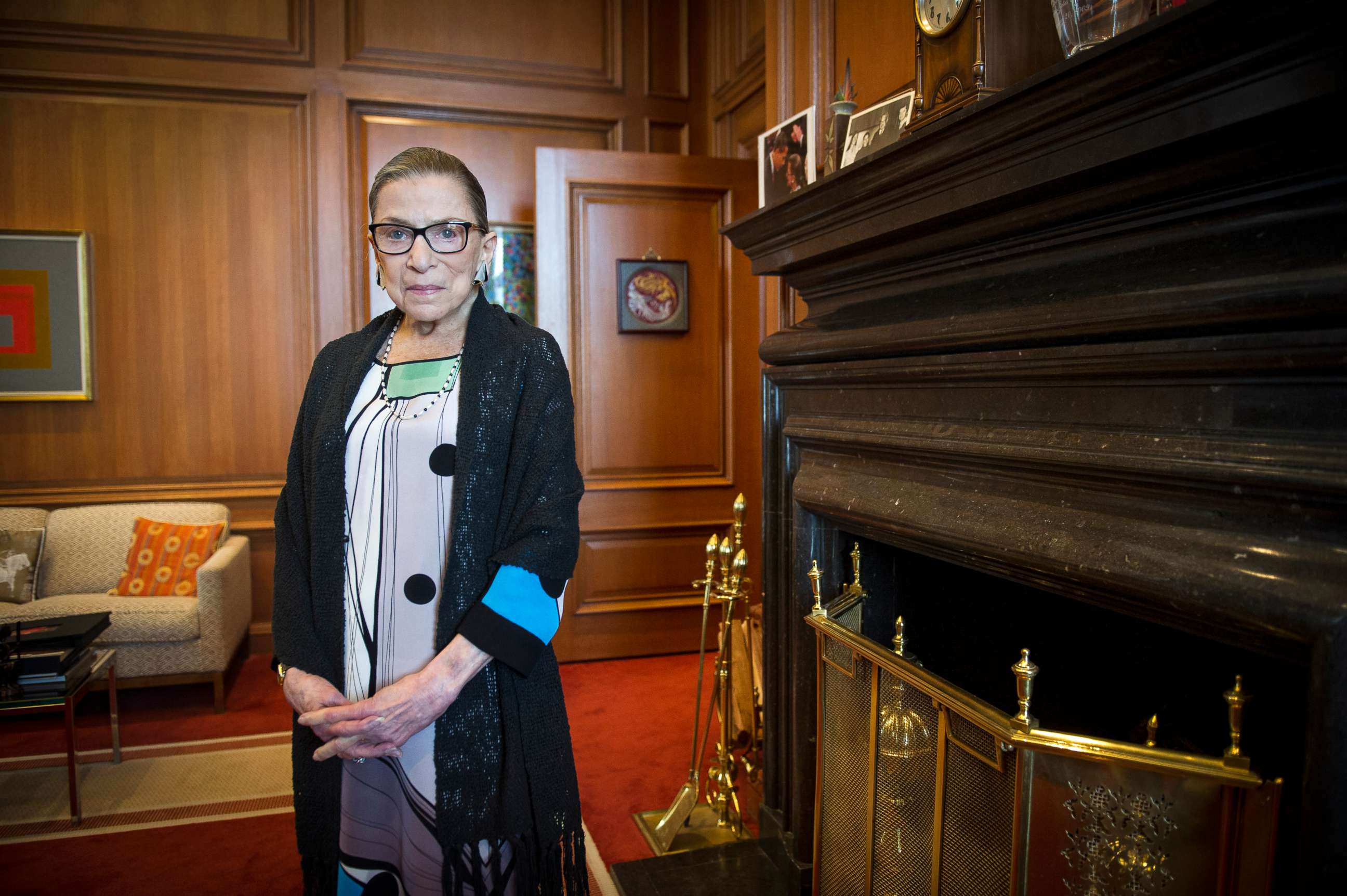
Well before Trump's election, Ginsburg rebuffed calls from some liberals to retire and allow Democratic President Barack Obama to name her successor.
"I think it's going to be another Democratic president," Ginsburg told The Washington Post in 2013. "The Democrats do fine in presidential elections; their problem is they can't get out the vote in the midterm elections."
After Trump's surprise defeat of Hillary Clinton in the 2016 election, Ginsburg publicly vowed to hold her seat on the court "as long as I'm healthy and mentally agile." With the balance of power at stake, Ginsburg wanted a Democratic president to name her replacement.
That hope ultimately went unfulfilled.
"What is the difference between a bookkeeper in the New York garment district and a Supreme Court justice? My answer is one generation," Ginsburg told young women law students in North Carolina in 2019.
"That's why I'm such an optimist. As bleak as things may seem, I have seen so many changes in my lifetime."




